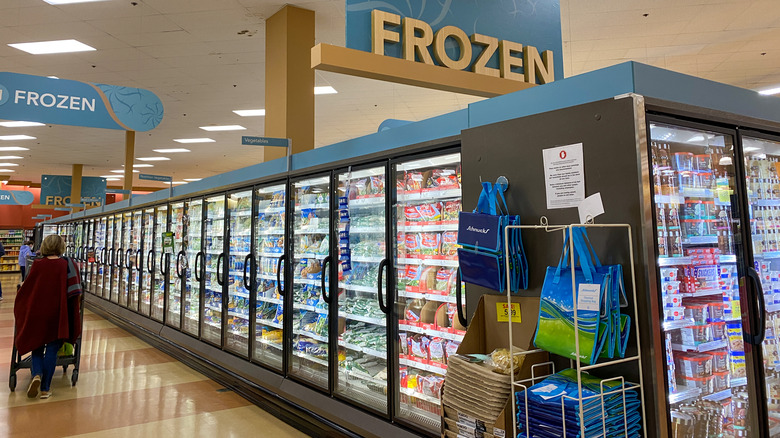Frozen Meals Are Part Of The New Normal As Inflation Drags On
How often do you sit down to a reheated frozen pizza or frozen dinner? Those of us who consider ourselves enthusiastic and accomplished home cooks might do our best to avoid these convenience foods, but we've got to admit that during busy stretches at work we've been known to toss an Amy's burrito or Trader Joe's Mandarin Orange Chicken into the microwave. Convenient, timesaving, and way tastier than their TV dinner predecessors due to improved technology and cooking techniques (via Food Business News), frozen meals are surging in popularity.
A recent study by The Insight Partners indicates that the global frozen food market is expected to increase from 2021's $251.15 billion to $373.76 billion by 2028, citing COVID-19 lockdowns as a main driver for this growth. But there's another factor that's pushing more and more Americans towards frozen meals, and that's inflation. According to NPD, a global market information company, lower-income households in the U.S. are turning to frozen foods — among other strategies — in order to save money on their food bills in these times of record-high food prices.
Lower-income households are choosing frozen food as a way to stretch their budgets
In a report released by NPD, the company cited the country's current record inflation as a primary motivating factor for an increase in the consumption of frozen food by lower-income households. Food inflation is at a 40-year high, the outlet reported, and households making $75,000 or less per year are employing a number of strategies for shaving dollars off their food bills. Those include dining out less often, choosing less expensive brands at the supermarket, and eating more shelf-stable and frozen foods.
The report states that lower-income earners consume nearly 90% of their meals and snacks at home, with frozen options being attractive due to their lower prices. Single-serve frozen meals are growing rapidly in popularity among this subset, with the report noting that record-high prices on healthy foods is becoming a barrier to eating a balanced diet for many Americans. Earlier this month, Information Resources, Inc. reported that in July, prices for refrigerated eggs rose by 46.8% and fresh citrus fruit by 26.7% as compared to July 2021.
"High food prices affect all consumers, particularly lower-income households," David Portalatin, NPD's Food Industry Advisor wrote in the report. "Our research shows that households with incomes under $75K represent 46% of the U.S. population. These households are a critical demographic for food manufacturers, grocers, and foodservice operators to understand how these households manage their food spending today."

